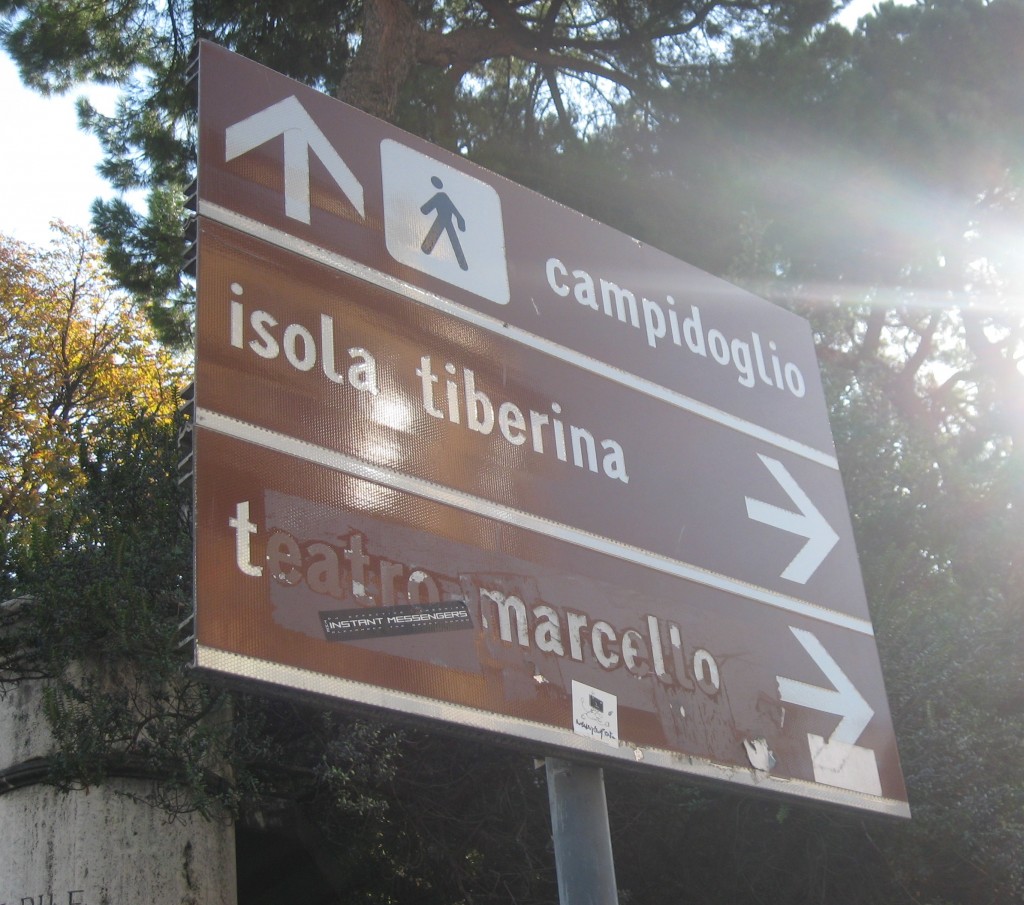 This is one attraction in Rome that visitors often walk by as the make their way to La Bocca della Verita (The Mouth of Truth), stare at it in awe and continue walking on.
This is one attraction in Rome that visitors often walk by as the make their way to La Bocca della Verita (The Mouth of Truth), stare at it in awe and continue walking on.
Few know that you can also walk through the incredible ruins of the Teatro di Marcello which will take you back almost 2000 years to the first century AD.
There is no entrance fee and if you have time, it’s worth the walk through this theatre where grand regal performances would have been held to entertain the Romans. The site was named after Marcellus who was the well-loved nephew of the Emperor Augustus.
Attraction in Rome: Brief History on Teatro Marcello
Plans and preparations for the theater area were first made by Julius Caesar who had the site cleared for construction. Unfortunately he was murdered at the nearby Theater of Pompey before the building had begun. The theater was finally completed in 12BC and inaugurated by Augustus.
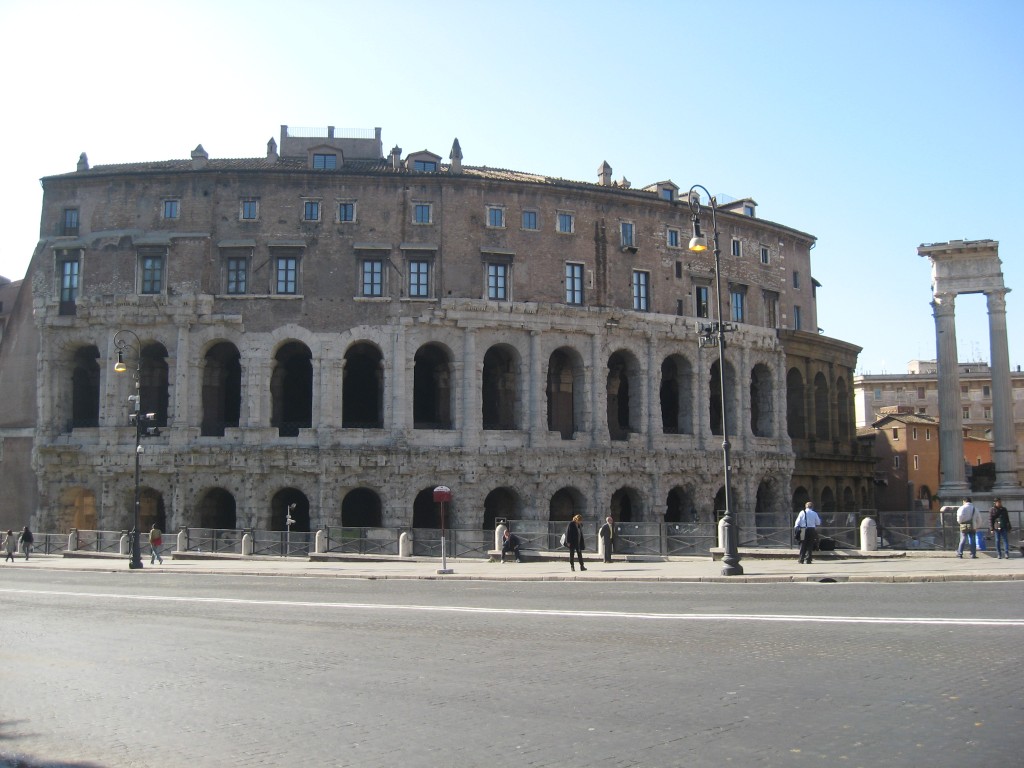
The architectural plans for Teatro Marcello were for three tiers of seating levels to seat around 20,000 spectators. Each tier was decorated with a different style of column, some of which can still be seen. These followed the traditional Greek order of Doric, then Ionic and finally Corinthian columns at the upper level.
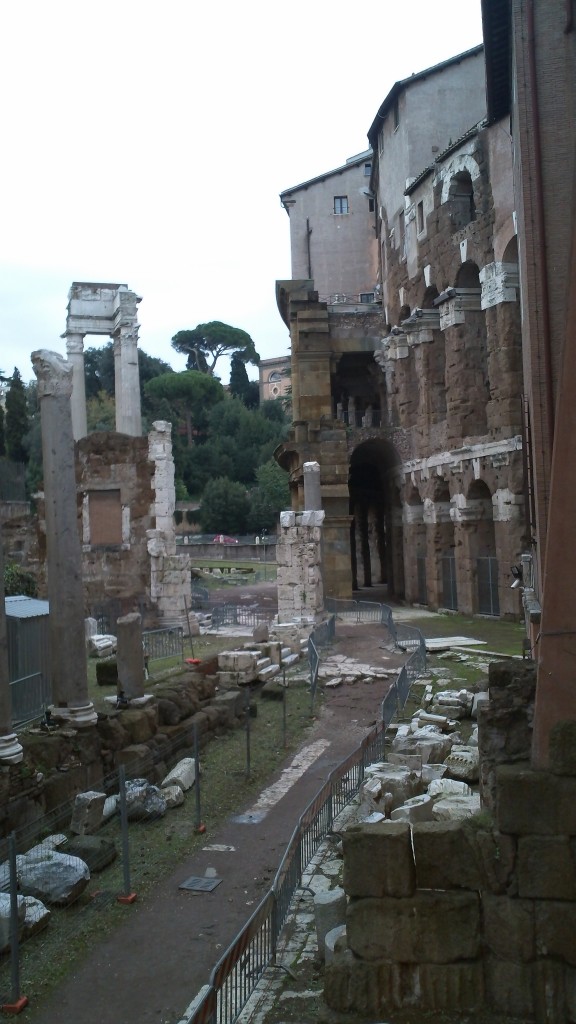
It was the simple and elegant design of this attraction in Rome which inspired Christopher Wren to emulate it in his 17th century design of the famous Sheldonian Theatre in Oxford. The size is still impressive and will get your attention, but unfortunately, the grandeur of this theater is now lost as much of the decorative white travertine marble was carried away and used to construct other buildings.
The theater was later used as a Fabian fortress and at the end of the 11th century, it was used by the Pierleoni and by the Savelli in the 13th century. Later, in the 16th century, the Orsini residence was built on top of the ruins of the ancient theatre. The upper portion is now divided into multiple apartments, and the surroundings of this attraction is Rome are now used as a venue for small summer concerts.
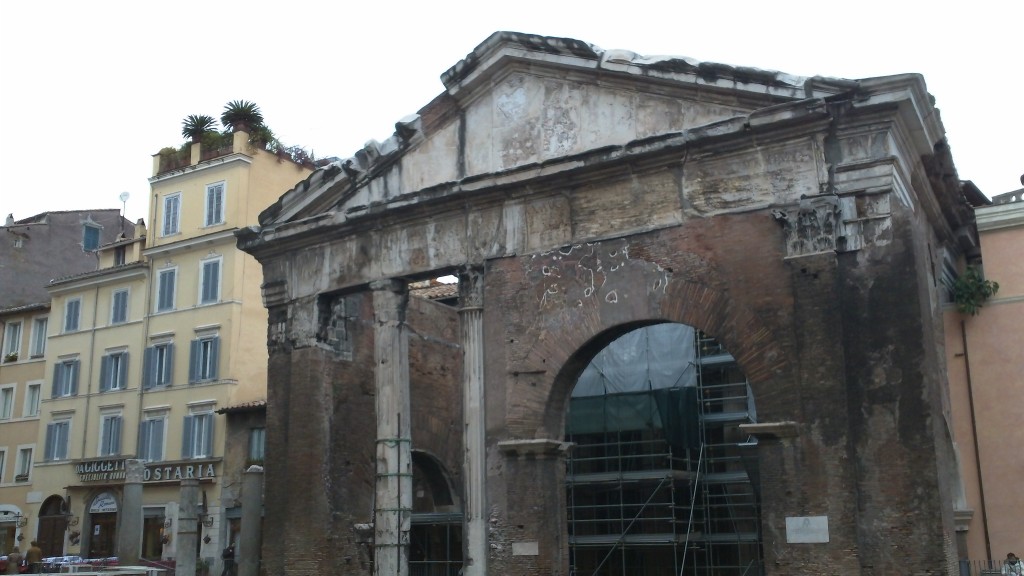
As you explore this architectural area, notice the three standing Corinthian columns which originally came from the Temple of Apollo in Greece. To the northwest is the Portico d’Ottavia. The far side of the area opens onto the main piazza of the Jewish ghetto with views of the Tiber to the southwest.
After a walk here, make sure you allocate some time browsing through the Jewish ghetto. It is very much an attraction in Rome that you wouldn’t want to miss as it also offers some great food and desserts to savor.
 BrowsingRome Blogging about my experiences and sharing my thoughts about Rome, Italy and beyond
BrowsingRome Blogging about my experiences and sharing my thoughts about Rome, Italy and beyond
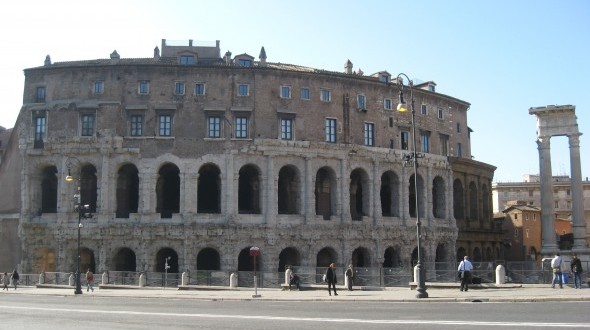
One comment
Pingback: Attraction in Rome: Teatro Marcello (Theatre of Marcellus) | Weddings in Rome | Scoop.it